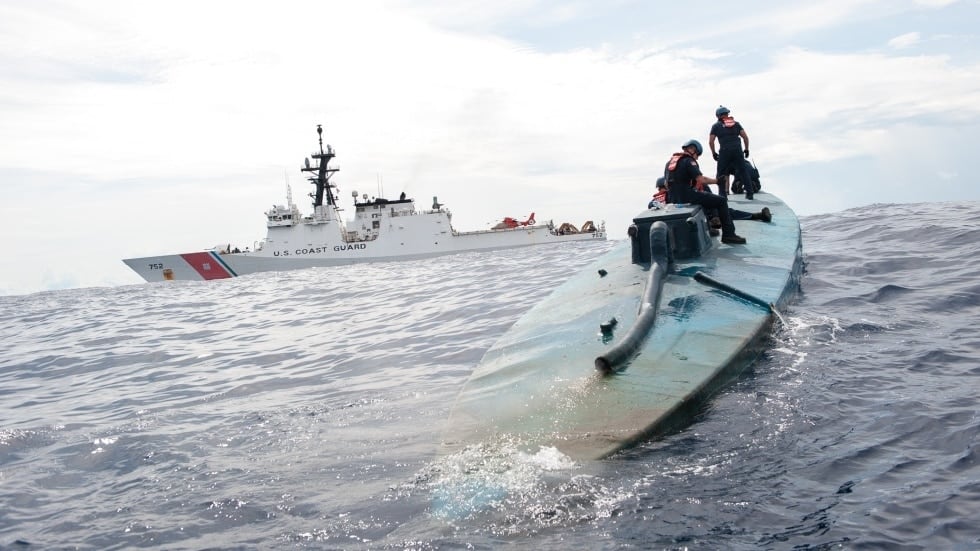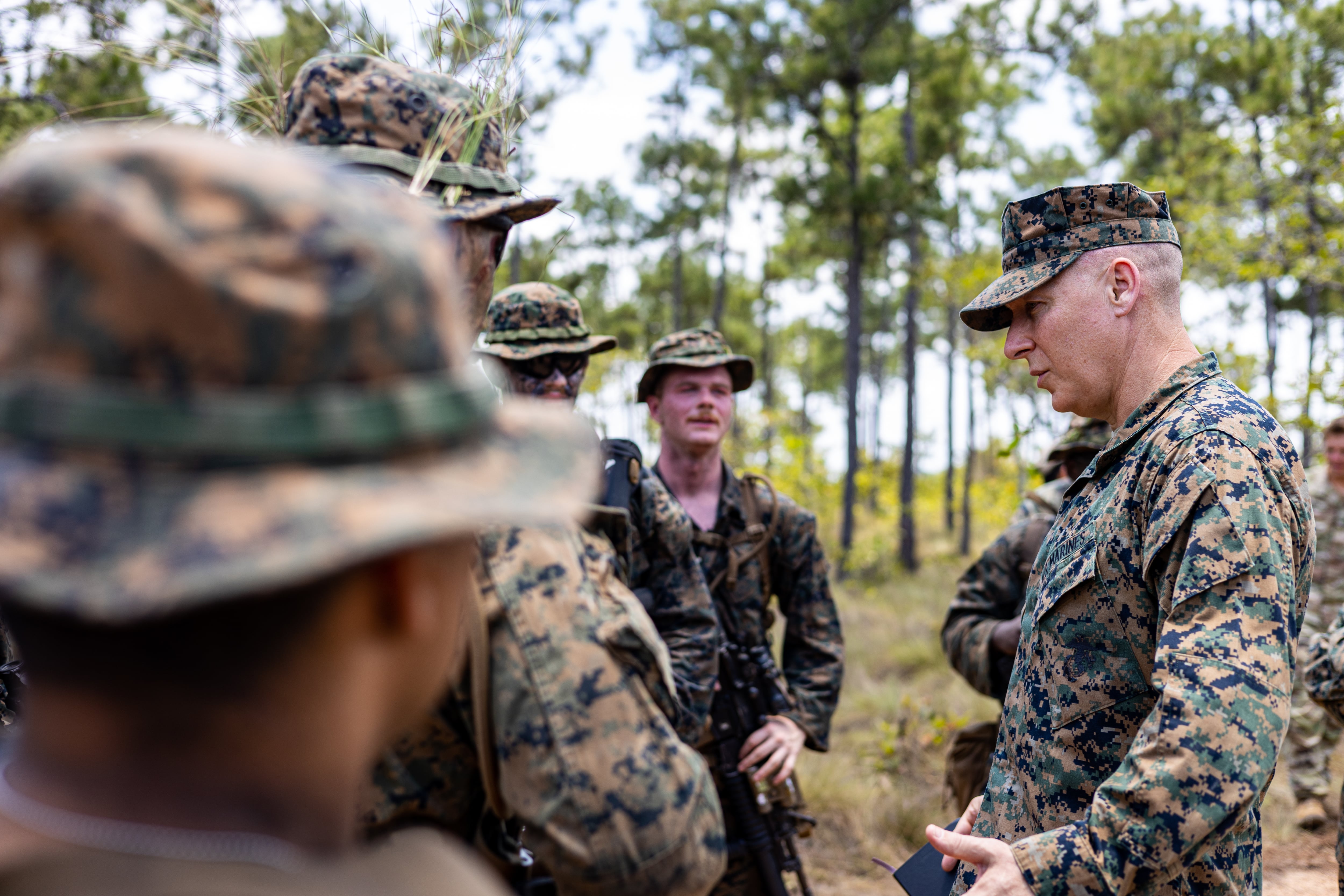With the Marine Corps Reserve becoming the primary force provider for its service in U.S. Southern Command, reservists, from brand new privates to senior officers, have a ready-made backyard for honing amphibious skills while contributing to real-world missions.
Southern Command hasn’t gotten its due in decades. The region, half of the Western Hemisphere and all in touching distance of the United States, saw decades of bloody wars, coups and the United States’ fair share of questionable interventions in the past century.
Current conflict may not involve U.S. troops under fire as they face in other theaters, but the threats are real and have consequences in the homeland, which include drug and human trafficking, border instability and the ongoing migration crises.
RELATED

Lt. Gen. David Bellon, commander of Marine Forces Reserve and Marine Forces South, told Marine Corps Times in a May interview that the area offers the reserve force unique opportunities.
“We have access to a Geographic Combatant Command that is maritime largely and has a lot of the same problem sets we’re trying to solve in other parts of the world,” Bellon said.
Col. Brian Ecarius, assistant chief of staff G-5 for Marine Forces South, noted that despite its distance from Europe or Asia, the theater presents ongoing “gray zone” competition for Marines deployed to the area.
That’s because, as Marine Corps Times recently reported, active military equipment sales and pressure from both Chinese and Russian governments on Latin American partners present their own security challenges for U.S. forces working with those partners.
Ecarius started his career on the enlisted side in 1988. After commissioning he spent much of his more than 30-year career as a commander and planner.
About 15 years ago, working as a Marine Forces planner in the G3-5-7 office, he first was exposed to the Southern command area and threat countering work the Corps did in the region.

He’s worked for more than three years now as assistant chief of staff and planner for the command.
Maj. Travis Bowden, operations adviser for Advisor Company A, Marine Forces Reserve, Force Headquarters Group, recently served on the Corps UNITAS deployment in 2021, primarily focused in Peru. The exercise dates back decades and is the oldest military maritime exercise in which the United States participates.
In just a two-week stretch during the monthlong exercise in 2021, Bowden said reservists conducted combined arms exercises, parachute operations, field training with Peruvian marines, ship embarkation and live fires.
“What UNITAS provided me was firsthand experience of how a MAGTF operates in the sea, on the deck the impact Marines can have,” Bowden said.
Marine reservists have been called up for combat rotations and inserted on activation orders to multiple theaters across the globe. But the command side opportunities for reservist work in the command elements has been rare until now.
Bowden said he sees opportunities for senior enlisted and officers to integrate with the command in active operations growing over the past two years and moving forward.
There’s some backstory to Marine reservists now being the primary supplier of Marines to the theater.
In 2014, the Corps stood up the Special Purpose Marine Air-Ground Task Force-Southern Command to provide troops for the SOUTHCOM commander. Those forces worked both training partners and also responding to both natural and humanitarian crises in the region.
But a subsequent push to both trim the budget and redistribute forces to the Pacific to counter China moved the Corps to put reservists in place for the crisis response in the region starting in 2016. A mix of both active and reserve continued to deliver troops.
At the time, Corps leaders, such as the then-task force commander, Col. Thomas Prentice, said that the reservists brought additional skills to bear on such deployments that often had heavy humanitarian elements.
“We have Marines that are software engineers, law enforcement officers and we even have a fashion designer,” Prentice told Marine Corps Times in 2016. “The reservists ... bring an additional capability towards being able to accomplish any assigned mission.”
Then, in 2021, the Corps ended the SPMAGTF mission shortly after announcing that Marine Forces Reserve would now send its Marines for that mission.
Having a three-star advocate such as Bellon not only for the reservists under his command but for deploying those reservists in a combatant command lends some heft, Ecarius said.
The colonel said by commanding both elements, someone in Bellon’s position has an “active interest” in the readiness of reservists serving in that mission.
“He has an interest in (reservists) having an operational mindset,” Ecarius said.
While Latin American partners get the benefit of training from Marine sources, the benefit works both ways.
For example, decades ago Marines helped train partners in riverine combat tactics using small boats for patrolling and interdicting.
That skill faded in common use among most non-reconnaissance Marine units as decades of deployment to the deserts of the Middle East took priority.
Now Marines are learning from partners in such places as Colombia, Belize and Brazil, on skills such as riverine combat and others.
And reservists get solid ways to test preparedness.
“A big piece in there is ‘readiness return,’” Ecarius told Marine Corps Times. “We’re very conscious of the employment of military forces either in contact or getting ready for contact. And when we’re training, we’re looking for readiness.”
That’s one way to say that doing combined arms exercises in Venezuela’s backyard might prime the readiness pump in a different way than calling for air support in the desert of southern California.
Southern command being so close, often in the same time zone as many drilling reservists, gives them a chance to pack up quickly, deploy, unpack, train, and return home.
That’s a skill of its own.
And, Ecarius said, there’s another aspect to what makes SOUTHCOM a good place to deploy and train for Marines specifically — all but two nations in the region where Marines work touch the ocean.
It’s a maritime theater, a kind of mini-Pacific. That makes for ways that Marines can work with partners but also with government groups such as intelligence agencies, the Department of State and the U.S. Navy and Coast Guard.
Gunnery Sgt. Julio Castellanos started his Marine career in 2004 when he enlisted and then became a machine gunner. That job led to work on security teams with deployments in Beirut then in Iraq and Afghanistan.
It wasn’t until 2017 that he was assigned to Southern Command, working as a liaison at a Colombian training base for three years.
Castellanos now serves as the theater security cooperation operations chief for MARFORSOUTH.
The gunny said he sees some of the training history when he works with Latin American counterparts.
They’re doing the same types of martial arts skills training and water survival training that was what the Corps was teaching in the mid-2000s.
In other areas, such as small unit tactics, the partner forces have had to adapt. They might not have drones at their fingertips or complex, precision supporting fires.
Castellanos was impressed with how “they can get stuff done with very little,” he said.
Those approaches as well as the riverine work many partner nations have advanced, are reasons enough to deploy to the region, he said.
“I would tell (Marines) if an opportunity every comes up to do any kind of training, exchange of information, subject matter exchange, there’s a lot to learn from our partner forces down South,” he said.
And that goes beyond boat work.
“A lot of these countries have had internal conflict and they’re good at what they do,” he said.
Todd South has written about crime, courts, government and the military for multiple publications since 2004 and was named a 2014 Pulitzer finalist for a co-written project on witness intimidation. Todd is a Marine veteran of the Iraq War.





